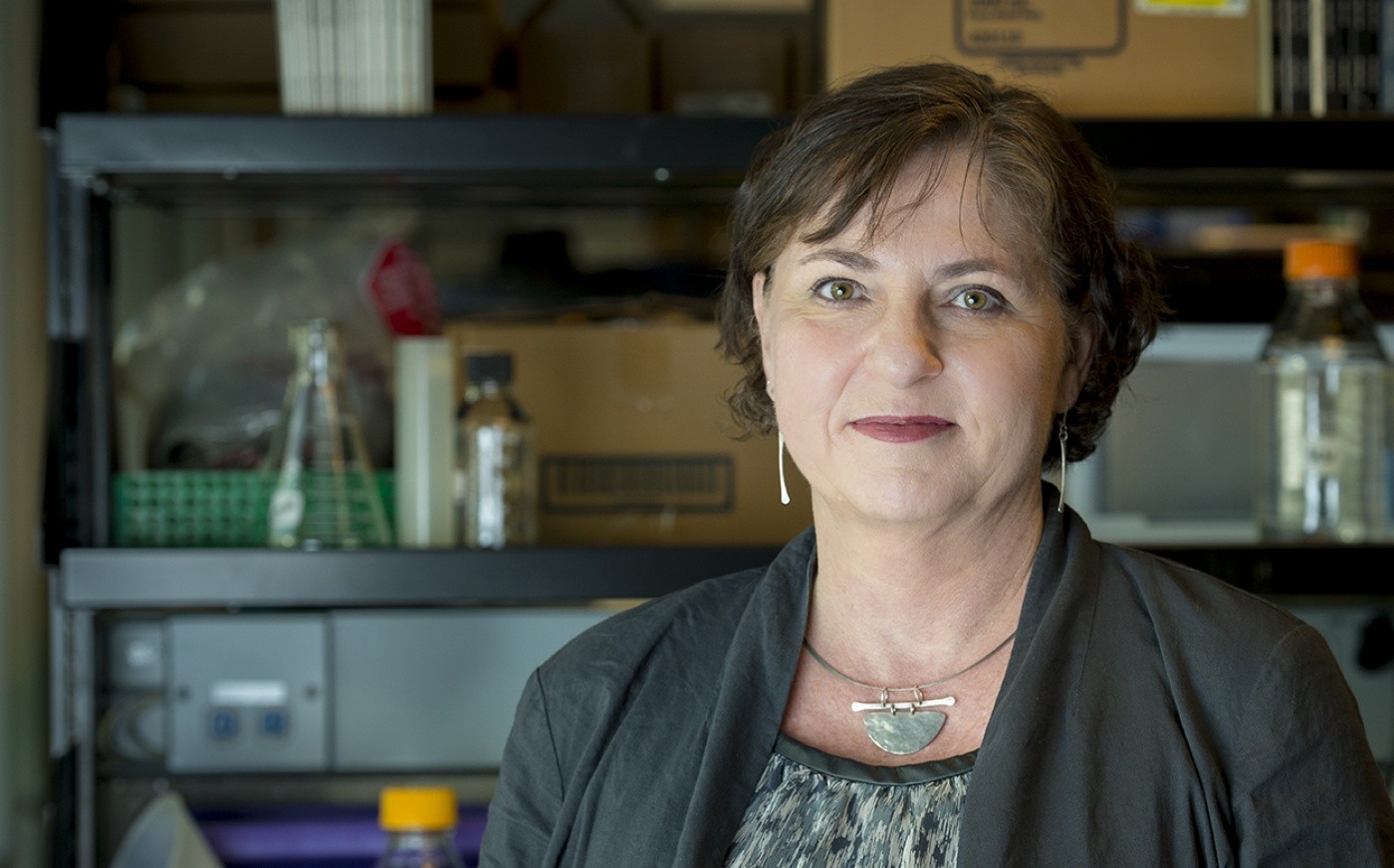Gladstone NOW: The Campaign Join Us on the Journey✕

Anke Meyer-Franke, PhD, created the Assay Development and Drug Discovery Core to help scientists at Gladstone and other institutions rapidly move their research toward drug discovery and, ultimately, clinical trials. [Photo: Chris Goodfellow, Gladstone Institutes]
Core facilities help scientists achieve their research goals by providing them with state-of-the-art technology and scientific experts for consultation. Recently, Gladstone expanded its fleet of nine core facilities by establishing the Assay Development and Drug Discovery Core. This new core will help scientists at Gladstone, as well as other academic institutions and small companies, accelerate their research into target and drug-discovery phases and move their findings into clinical trials and potential therapies for disease.
“With the new core, we can provide in-house expertise to help scientists, both within and outside of Gladstone, discover potential new drugs,” said Lennart Mucke, MD, director of the Gladstone Institute of Neurological Disease. “I am excited about the many opportunities that this core affords in accelerating biomedical research and finding therapies for major diseases.”
The core will complement the Small Molecule Discover Center (SMDC) at the University of California, San Francisco (UCSF). The SMDC has allowed Gladstone scientists to design molecules to modulate the functions of proteins or specific cellular phenotypes and, most significantly, screen for drugs that could be used as therapies for disease. However, the high demand on that facility was impacting Gladstone’s research timelines.
“The SMDC has provided excellent services for scientists at Gladstone, but we were often waiting for access to their equipment and staff,” said Anke Meyer-Franke, PhD, a staff research scientist at Gladstone. “We also needed more expertise in developing cell-based assays that are ready for transfer to collaborators in industry.”
With the help of Mucke and Stephen Freedman, PhD, Meyer-Franke created a core that supports scientists, on a fee-for-service basis, by helping them establish new assays or adapt existing ones for high-throughput screening. Within the core, she will either develop assays for scientists or train them to complete these experiments on their own.
The core, located in Gladstone’s new Convergence Zone, houses a BioTek MultiFlo Cell Dispenser and an EL-406 Liquid Handler, which automatically and rapidly handle liquids for biochemical and cell-based assays in up to 20 plates at a time. For endpoint analysis, the core contains two automated plate readers, an MSD Sector Imager that measures electrochemiluminescence for high-sensitivity and multiplex assays, and a BioTek Synergy H4 Hybrid Plate Reader that measures both fluorescence and colorimetric readouts. The core is also equipped with a Thermo Fisher Cellomics Arrayscan XTI, a high-throughput robotic microscope capable of high-content imaging for cell-based assays. This microscope is connected to an Orbiter robot that can automatically feed plates from a stacker into the instrument. Finally, the core has a suite of workstations and server storage for data acquisition and analysis.
After developing and optimizing assays in-house, Gladstone scientists can transfer these assays to the SMDC or other external facilities to perform high-throughput screening with large compound libraries to identify potential drugs that may lead to therapies. By early next year, the assay core at Gladstone plans to obtain specialized compound libraries for select high-throughput screening in-house.
“We are eager to work with more scientists and help them accelerate their research efforts,” said Meyer-Franke. “As the new core expands, we hope to build new relationships, both within and outside of Gladstone, to further strengthen biomedical research and drug discovery.”
Want to Join the Team?
Our people are our most important asset. We offer a wide array of career opportunities both in our administrative offices and in our labs.
Explore Careers
